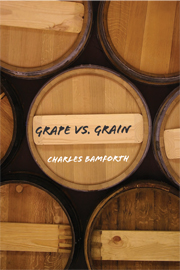Book contents
- Frontmatter
- Contents
- Preface
- Grape vs. Grain
- 1 Beer and Wine: Some Social Commentary
- 2 A Brief History of Wine
- 3 A Brief History of Beer
- 4 How Wine Is Made
- 5 How Beer Is Made
- 6 The Quality of Wine
- 7 The Quality of Beer
- 8 Types of Wine
- 9 Types of Beer
- 10 The Healthfulness of Wine and Beer
- 11 Conclusions about Beer and Wine – and the Future
- Further Reading
- Index
10 - The Healthfulness of Wine and Beer
Published online by Cambridge University Press: 16 September 2009
- Frontmatter
- Contents
- Preface
- Grape vs. Grain
- 1 Beer and Wine: Some Social Commentary
- 2 A Brief History of Wine
- 3 A Brief History of Beer
- 4 How Wine Is Made
- 5 How Beer Is Made
- 6 The Quality of Wine
- 7 The Quality of Beer
- 8 Types of Wine
- 9 Types of Beer
- 10 The Healthfulness of Wine and Beer
- 11 Conclusions about Beer and Wine – and the Future
- Further Reading
- Index
Summary
On November 5, 1991, a journalist by the name of Morley Safer presented a piece on the highly rated CBS news program, Sixty Minutes, that told of how a French doctor, Serge Renaud, had shown that red wine was a powerful counter to coronary heart disease. The phenomenon became known as the French paradox, for the French were pursuing a diet that was anything but healthful and seemingly certain to cause serious blocking of the arteries, but in fact that wasn't occurring. Almost overnight, sales of red wine started to surge in America and the wine industry in the country took massive advantage.
It was far from being the first report of alcohol consumption being beneficial to health, as we found earlier in this book when discussing the history of wine and beer. Indeed, the Irish doctor Samuel Black in 1819 remarked on the far lesser incidence of angina in France as opposed to his own country on account of “the French habits and modes of living.” The first properly scientific study in this area was conducted by the Baltimore biologist Raymond Pearl in 1926, all the more remarkable for its timing in that it was smack in the middle of Prohibition. I suppose it was based on data accumulated before the Volstead Act, which enabled federal enforcement of Prohibition.
- Type
- Chapter
- Information
- Grape vs. GrainA Historical, Technological, and Social Comparison of Wine and Beer, pp. 163 - 180Publisher: Cambridge University PressPrint publication year: 2008



